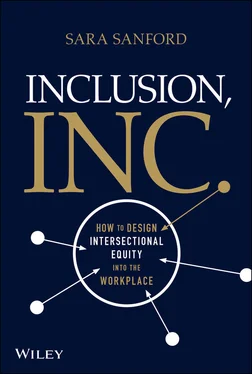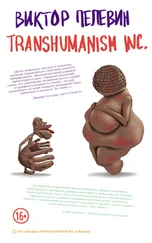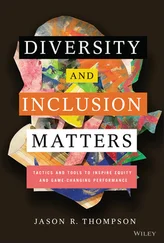Something hit me very hard once, thinking about what one little man could do. Think of the Queen Elizabeth—the whole ship goes by and then comes the rudder. And there's a tiny thing at the edge of the rudder called a trim tab. It's a miniature rudder. Just moving the trim tab builds a low pressure that pulls the rudder around. Takes almost no effort at all. So I said that the little individual can be a trim tab. Society thinks that's it going right by you, that it's left you altogether. But if you're doing dynamic things mentally, the fact is that you can just put your foot out like that and the whole big ship of state is going to go. So I said, “Call me trim tab.”
The truth is that you get the low pressure to do things, rather than getting on the other side and trying to push the bow of the ship around. And you build that low pressure by getting rid of a little nonsense, getting rid of things that don't work and aren't true until you start to get that trim-tab motion.
To reorient our businesses toward a more inclusive future, we need to stop asking employees to push harder against the bow of the ship, and instead, decrease the resistance employees face. We need trim tabs. The environmentalist movement gives us a good example of what this looks like.
Let's say you're an environmentalist who's traveled out of town to present your findings at a conference. While you're prepping for your presentation and running back and forth to networking events, your values don't change, but your focus and your actions might. You may be distracted and less vigilant about turning the lights or AC off in your hotel room every time you leave. Despite your environmentalist moral core, you're accidentally wasting energy.
European hotels figured out a behavioral design hack that reduces their energy bills and makes it easier for their environmentally conscious guests to act in alignment with their values. 12 Hotel guests must place a room key into a slot on the wall to activate the lights and temperature control system in their rooms. When they leave the room and take their key with them, they don't have to think about turning off the lights or the air conditioning. They just turn off when the key card is absent. By adding a trim tab, the design of the room has taken thinking (and willpower) out of the equation.
The human brain carries at least 200 unconscious biases that cognitive science has recognized. 13 Scientists estimate that unconscious biases drive between 75 and 90 percent of our decision-making, without our even realizing it. 14 Current approaches to DEI rely on employees to stay vigilant against incursions of unconscious biases that they're probably not even aware of, while performing well at challenging jobs. We're asking employees to push against the front of a very, very large ship, and we've seen how it's played out. We've plateaued. We've made all the progress we can make under the “try your best” model.
We still have a chance to change course. We can either ask employees to keep pushing against the front of the ship, or we can adjust our equity trim tabs and focus on correcting mechanics rather than mindsets.
GEN Certification: Discovering the Equity Trim Tabs
When Ford needed to improve quality in the 1980s, they plotted defect rates on charts that were visible to everyone in their factories. In today's automotive marketplace, Tesla has refocused the measurement spotlight on a new metric that matters: Delivery Performance—the percentage of fulfilled deliveries that meet the customer-promised delivery date. Any employee can log on to Tesla's KPI dashboard, at any time, to see the company's progress toward its 90 percent Delivery Performance goal. Digital dashboards that track business-critical function data provide a clear, quantifiable standard for employees to aspire to.
Employers, however, have never had such a measurable standard for equity in the US workplace. This has left them to take “best guesses” in an area that already feels fraught with complexity. Maybe moving networking events to work hours will get more women to participate, but without measurement, who knows? Maybe stating that leadership supports Black employees is enough to make them feel included, but without measurement, who knows?
Employees and employers both want clear benchmarks that go beyond good intentions. The LEED certification gave businesses this clarity around environmental stewardship by outlining the exact steps they need to take for certification. Our DEI-focused organization, GEN, wanted businesses to have this kind of playbook for workplace equity.
Seeing the impact other standards have made, we partnered with the University of Washington to create the first standardized certification for intersectional equity in US businesses: the GEN Certification.
Creating this certification meant finding the equity trim tabs. We found hundreds. We refer to them as “cultural levers” that can be adjusted to design bias out and equity in. Like the wall holder for the hotel key card, these simple redesigns take resistance out of the equation. As Fuller would say, we're “getting the low pressure to do things…getting rid of a little nonsense, getting rid of things that don't work and aren't true,” making it easier for everyone to make decisions based on merit, rather than bias.
Over years, we beta tested these cultural levers, certified companies, and tracked their progress. We found out what works and what doesn't. Those findings form the blueprint for this book.
This is not a women's empowerment book (though women may feel empowered after reading it) or a book on racist behaviors in the workplace. This is a book about designing workplace environments that counter the impact of bias to become truly merit-based. It acknowledges that we all have bias but does not exhort individuals to just try harder to prevent themselves from being influenced by it. Instead, it shifts the challenge from the employee to “be better” to the organization, to do better, and provides concrete steps and design elements that businesses can use to meet it.
While the solutions presented in this book will not rid the workplace of sexist or racist individuals, they will provide systemic designs that are more likely to discourage those perspectives and minimize their impact . Inclusion, Inc offers a “trim tab” approach: simple, purposeful redesigns that amplify the effects of process optimizations, turning them into agents of transformational change.
We all come to the workplace with varying levels of DEI understanding and experience. This book is meant for anyone who wants to build, and work in, inclusive workplace systems. If you identify with any of the following groups, this book is for you!
Business Leaders : Expectations on managers and executives to champion DEI continue to rise. Many are finding themselves overwhelmed by the amount of complicated, highly nuanced information surrounding diversity and inclusion in the workplace. This book distills the profusion of DEI research and theory into accessible, actionable takeaways for identifying flawed processes and creating inclusive cultures.
HR Professionals and DEI Leaders : HR leaders are now expected to understand DEI in ways they haven't before. This book will serve as a basic reference for understanding DEI concepts and provide a roadmap for streamlining DEI initiatives. Not only will HR professionals be introduced to new knowledge, they'll be given language to advocate for implementing inclusive practices in their organizations.
Underestimated Employees : This book is also for anyone who has had to leave behind who they are to function successfully where they work. For individuals who have felt that their only two options as employees were to assimilate or leave, this book breaks down the systemic barriers they've faced, gives language to their experiences, and provides evidence-backed solutions for which they can advocate.
Читать дальше












